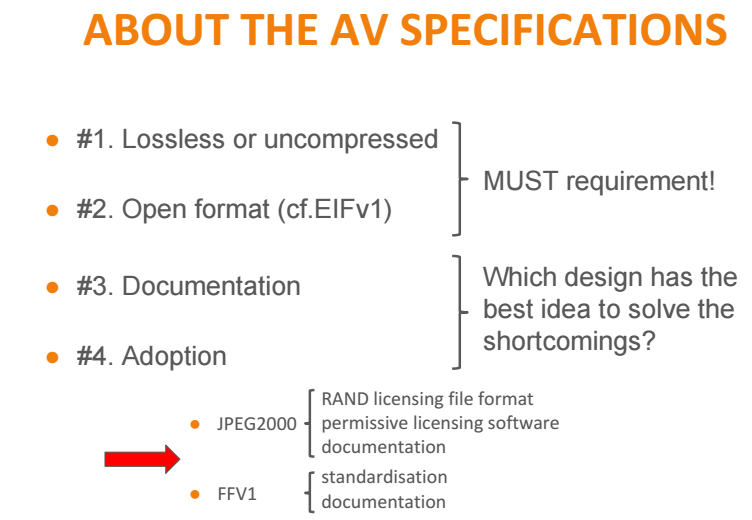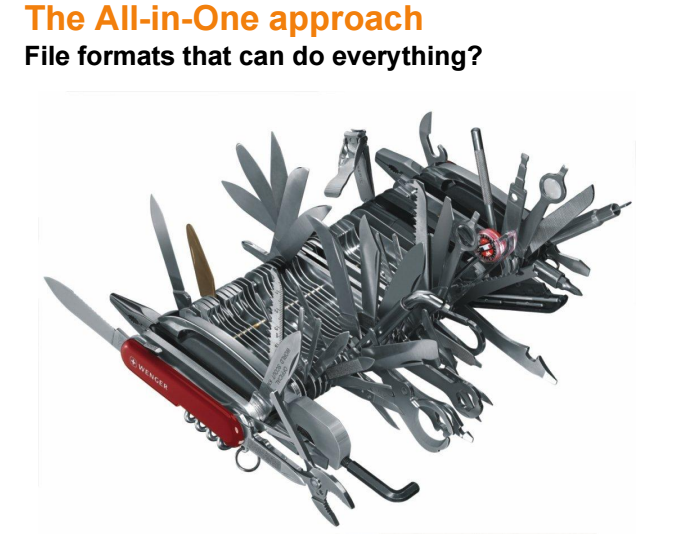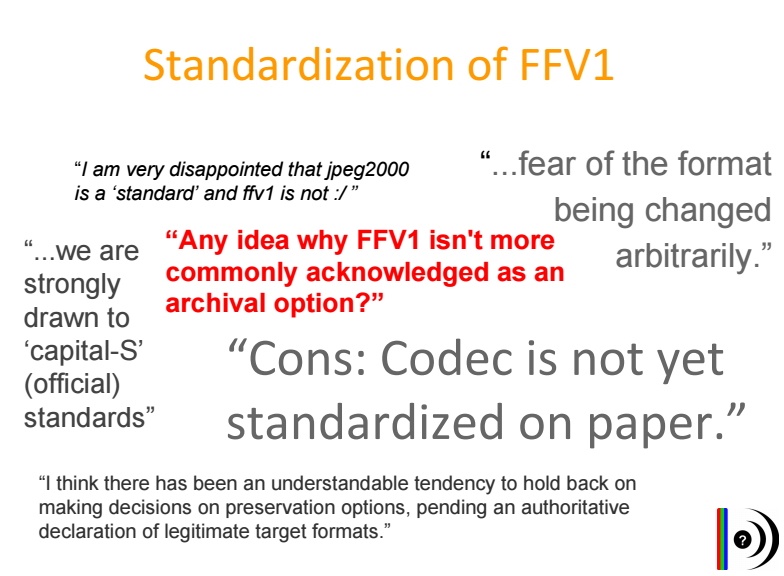MediaArea presents at FIAT/IFTA
On October 8, Tessa Fallon presented on FFV1 as a representative of the PREFORMA/MediaArea team at the Fédération Internationale des Archives de Télévision / The International Federation of Television Archives (FIAT/IFTA) World Conference in Vienna. The theme of the conference was "Audiovisual Culture, a bridge to the future"--what better illustration of future trends in preservation than a discussion of open source formats? No, that last bit was not just an awkwardly constructed rhetorical question. In the past, would we have been able to present an open source, community developed file format at such a conference? One doubts it, given the history of proprietary format development for audiovisual archives. Open source should not been dismissed as a fringe or low-budget option--this is the future of development. To paraphrase a section of the presentation (NOTE: Peter Bubestinger, “FFV1 for Preservation”, FIAT/IFTA 2015): open source is a feature, not a defect.
Along with co-presenters Bert Lemmens (PACKED vxw) and Peter Bubestinger (Österreichischen Mediathek), Fallon conducted a 1.5 hour workshop titled "FFV1 for Preservation". The workshop was formatted as a series of three short presentations with an opportunity for questions and answers at the end of the final presentation.
Lemmens introduced the PREFORMA project and explained the decision to include FFV1 as one of the preservation formats to be researched. The criteria for formats to be included in the PREFORMA project challenge are summarized in the presentation excerpt here:

Bert Lemmens, "FFV1 For Preservation" FIAT/IFTA 2015
Bubestinger explained some of the technical challenges with FFV1 and the current technical developments, including features and advantages of using FFV1 for preservation. Bubestinger likened the format selection problems facing audiovisual archives to finding the right Swiss Army knife: if you try and include every possible function or feature, you end up with an unwieldy and impossible tool.


The tool on the left actually exists--the writer of this blog post does not endorse purchasing this tool.
Bubestinger went into detail about why FFV1 is the format we really need, including its advantages with regards to sustainability (free and open source codebase), accessibility (included with FFMPEG/libav by default), and interoperability (no vendor dependency, reference implementation is the production implementation).
Finally, Fallon provided an overview of the standardization efforts for FFV1 through the Internet Engineering Task Force (IETF). The standardization of FFV1 is a necessity for increasing adoption, and the initial standardization research of the MediaArea team found that the IETF was found to be the most appropriate standards body. The IETF fulfilled all of the project criteria, namely that it is non-profit organization, standards are open source, there is no pay wall, and it had the support of developer communities.
Fallon also discussed the current efforts form the IETF working group Codec Encoding for LossLess Archiving and Realtime transmission (CELLAR), which if approved will be the IETF home for work on standardization of FFV1 (as well as FLAC and Matroska). More information about CELLAR can be found here. [Ed. We will be releasing some exciting news regarding the status of the working group very soon!]

"Why does FFV1 need to be standardized?" Here are some answers...
The presentation concluded with a brief preview of the MediaConch conformance checker currently under development (more about MediaConch here)
The workshop was well-received, and informal feedback from attendees was encouraging. It appeared that a number of attendees were hearing about FFV1 in depth for the first time, and it was a great opportunity to bring FFV1 to the attention of broadcast and film archives.
Slides will be available through the FIAT/IFTA website in the near future. Click here for a post-presentation interview with Peter Bubestinger.